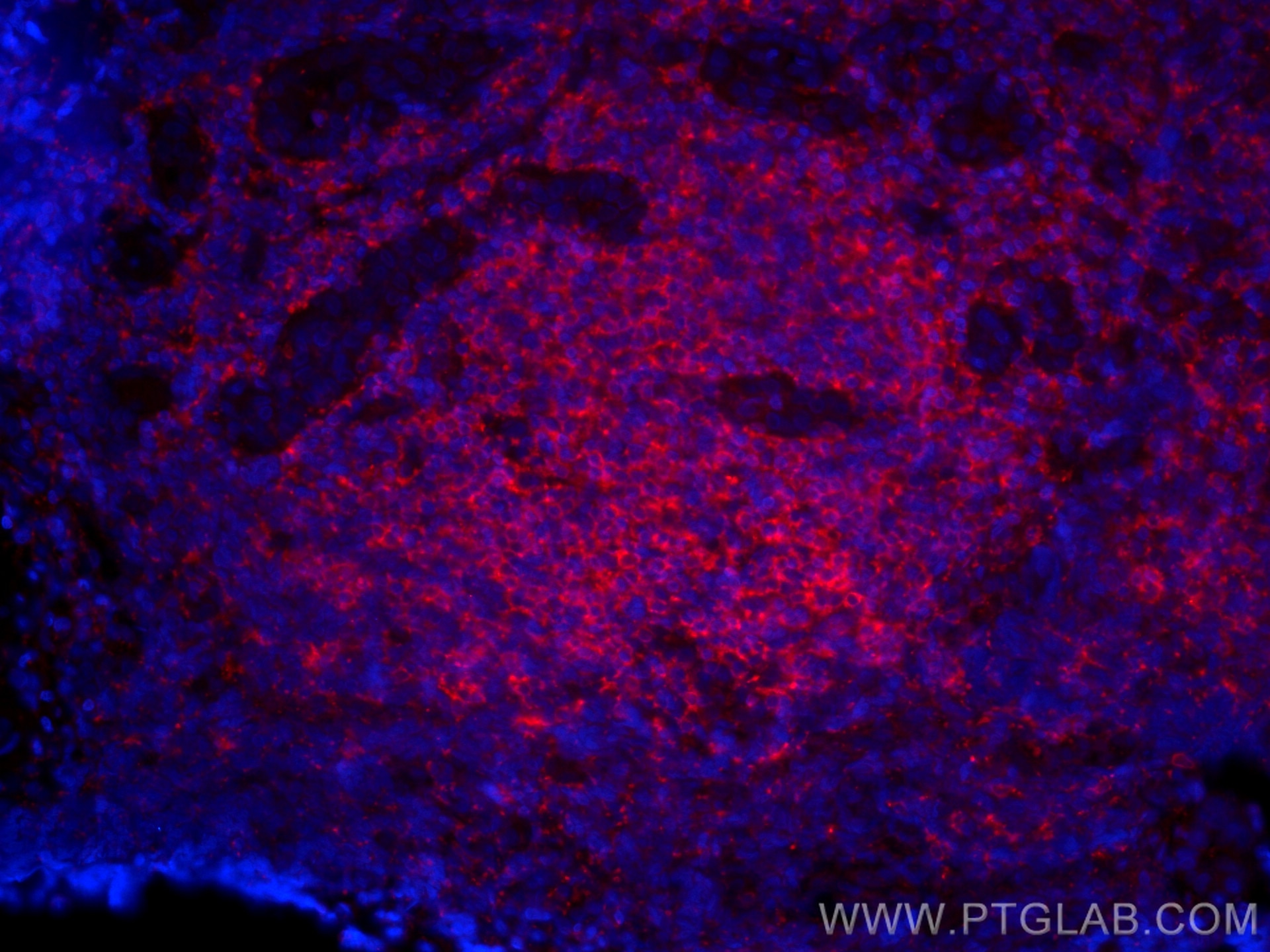Anticorps Monoclonal anti-RIAM,APBB1IP
RIAM,APBB1IP Monoclonal Antibody for IF
Hôte / Isotype
Mouse / IgG2a
Réactivité testée
Humain, souris
Applications
IF
Conjugaison
CoraLite®594 Fluorescent Dye
CloneNo.
2F8A2
N° de cat : CL594-67143
Synonymes
Galerie de données de validation
Applications testées
| Résultats positifs en IF | tissu d'amygdalite humain, |
Dilution recommandée
| Application | Dilution |
|---|---|
| Immunofluorescence (IF) | IF : 1:50-1:500 |
| It is recommended that this reagent should be titrated in each testing system to obtain optimal results. | |
| Sample-dependent, check data in validation data gallery | |
Informations sur le produit
CL594-67143 cible RIAM,APBB1IP dans les applications de IF et montre une réactivité avec des échantillons Humain, souris
| Réactivité | Humain, souris |
| Hôte / Isotype | Mouse / IgG2a |
| Clonalité | Monoclonal |
| Type | Anticorps |
| Immunogène | RIAM,APBB1IP Protéine recombinante Ag4602 |
| Nom complet | amyloid beta (A4) precursor protein-binding, family B, member 1 interacting protein |
| Masse moléculaire calculée | 666 aa, 73 kDa |
| Poids moléculaire observé | 100 kDa |
| Numéro d’acquisition GenBank | BC035636 |
| Symbole du gène | APBB1IP |
| Identification du gène (NCBI) | 54518 |
| Conjugaison | CoraLite®594 Fluorescent Dye |
| Excitation/Emission maxima wavelengths | 588 nm / 604 nm |
| Forme | Liquide |
| Méthode de purification | Purification par protéine A |
| Tampon de stockage | PBS avec glycérol à 50 %, Proclin300 à 0,05 % et BSA à 0,5 %, pH 7,3. |
| Conditions de stockage | Stocker à -20 °C. Éviter toute exposition à la lumière. Stable pendant un an après l'expédition. L'aliquotage n'est pas nécessaire pour le stockage à -20oC Les 20ul contiennent 0,1% de BSA. |
Informations générales
APBB1IP gene encodes a Rap1-GTP-interacting adapter molecule (RIAM) which is an important protein in Rap1-mediated integrin activation and adhesion. Rap1 is a small GTPase frequently activated in tumors such as melanoma and prostate cancer. RIAM is widely expressed with high expression in thymus, spleen, lymph node, bone marrow and peripheral leukocytes. RIAM may function in the signal transduction from Ras activation to actin cytoskeletal remodeling. The observed molecular weight of RIAM is about 100 kDa.
Protocole
| Product Specific Protocols | |
|---|---|
| IF protocol for CL594 RIAM,APBB1IP antibody CL594-67143 | Download protocol |
| Standard Protocols | |
|---|---|
| Click here to view our Standard Protocols |


